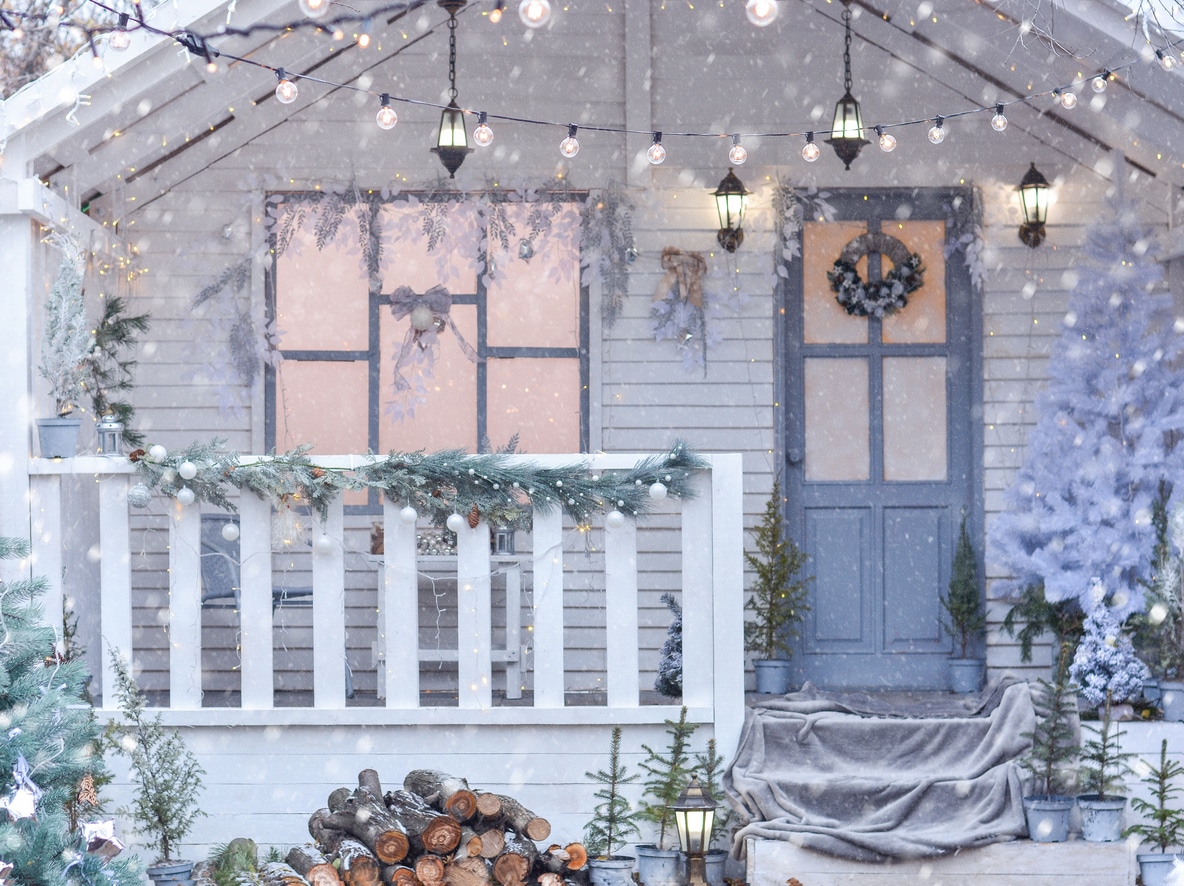
6 Easy, Eco-Friendly Winter Tips for Your Home

Your home is your castle and winter means spending more time in it. Why not create an environment to make you feel cozy and snug?
Better yet, let what happens inside your walls harmonize with your outside environment. You can tread more lightly on the planet, and it doesn’t necessarily take much money or major overhauls like converting to solar. If anything, it saves you cash on utility bills.
What can you do to beautify your investment while protecting the world? Here are six easy, eco-friendly winter tips for your home.
1. Improve Your Energy Efficiency With Insulation
Did you know leaving certain areas of your home uninsulated could cost you up to 15% more on your heating and cooling bills? Over time, that money adds up – and you could put it toward more pleasant uses. Plus, wasting energy isn’t kind to the planet, increasing reliance on fossil fuels and producing needless emissions.
Often-neglected areas include your basement, attic, crawlspaces and garage. Your garage is the easiest to address, as the right door preserves more heat inside your home. You’ll enhance your property value, too, because models with sufficient R-values up your resale price by 4%.
While you’re remodeling this space, add insulation. It will increase your energy efficiency every time you pull in and start grabbing groceries before you shut your door. Additionally, you’ll enjoy a much warmer space above – no more freezing feet on the bedroom floor.
When addressing basements, crawlspaces and attics, pay particular attention to areas around vents and ducts where leaks can develop. While you’re mucking around in unpleasant places, wrap your pipes for good measure to help prevent freezing – more on that in a bit.
2. Get Out the Caulk Gun and Address Your Windows
If you feel a draft around doors or windows, you’re losing energy and making your home unnecessarily uncomfortable. Fortunately, it’s a snap for even novice DIYers to install weather stripping and learn to work a caulk gun.
Practice on some scrap wood first if you feel insecure about your ability to draw a straight bead, then get to work addressing those leaks. Clean up any messes immediately so they don’t have a chance to set.
While completing this chore, take a look at your windows. Is it time for a replacement? Windows last about 20 years on average, but other factors also play roles. For example, single-pane models are far less energy-efficient than modern dual panes, meaning you might want to upgrade early if you have the extra cash and want to start reaping the savings now.
3. Choose Your Holiday Decor Wisely
The holidays are a time for decorating and all those sparkly lights and decorations get you in a more festive spirit. They also enhance your home’s beauty – few things are more romantic than watching the snowflakes kiss the earth from your window while your tree lights up the background. However, you should be mindful when getting in the celebratory mood by remembering the impact your decor has on the planet.
Fortunately, it’s a snap to find more energy-efficient LED bulbs on store shelves today. They last far longer than incandescents and won’t cause an unpleasant bump in your electric bill.
Also, please keep your fur family in mind when selecting decor. In general, the more houseplants, the better – they help clean your indoor air. However, some species popular around the holidays can be fatal for Fido or Fifi, including:
- Poinsettias
- Holly
- Mistletoe
- Amaryllis
- Lilies
4. Take Better Care of Your Indoor Air
You spend a lot of time indoors during the winter. Could the air you breathe make you sick? It could if you neglect to change your air filters, allowing bacteria and viruses to accumulate and recirculate around your home each time the heater runs.
The folks at the Environmental Protection Agency recommend changing your filters every 60 to 90 days. However, you may need to do so more often if you have pets or smokers in the home. While duct cleaning is an unnecessary expense in most cases, you might splurge if you recently moved into an older property and aren’t sure how well the previous owners maintained the system.
5. Prevent Your Pipes From Freezing
Remember that bit about getting all the nasty crawlspace business out of the way at once? Wrapping your pipes can prevent freezing. Pay particular attention to joints and bends in the pipe, as these tend to get colder faster.
What if you travel over the holidays? Follow these tips to prevent coming home to a burst-pipe disaster:
- Keep your heater on: Don’t drop it below 55° Fahrenheit.
- Leave one drip: Let the farthest spigot from the main line drip slowly on cold to keep water running and prevent bursts.
- Open your cabinets: This allows heat to flow, warming the water inside the pipes.
6. Take Advantage of Passive Light and Heat
Finally, winter days are short enough. Don’t deprive yourself of limited sunlight – and warmth – with heavy curtains. Instead, opt for thin, gauzy numbers or take them down in favor of a one-way film. The latter provides an extra bit of insulation and protects your furnishings from UV rays.
You probably run your oven nearly nonstop over the holidays. When your roast emerges, leave the oven door open to take advantage of the temporary burst of passive heat. You’ll also improve energy efficiency if you have a fan oven, as these devices can keep running longer if they sense contained warmth.
Easy Eco-Friendly Winter Tips for Your Home
Winter means spending more time at home. Why not make your interior environment more pleasant while protecting the one outdoors? These easy, eco-friendly winter tips for your home can improve your enjoyment of the season. Get started on making your interior the ultimate cozy and sustainable haven today.
6 Comments
-
Anonymous
Some homes that are constantly running their heating & air conditioning systems will likely have to change the filters more often. However, if you only run your heating and cooling system occasionally, you can extend the life of your air filters.
The best rule of thumb is to simply check your filter to see if it is caked in dust. Often, visually inspecting your air filters will be sufficient. -
Regina
Thanks for the helpful advice! I just want to add a few words about insulation — if you get your hot water from a hot water storage tank, you also need to insulate it for winter. Insulation with an R-value of at least 24 is preferable. This could reduce heat loss by up to 45% and save you around 10% in water heating costs.
And the good news: you can find pre-cut water tank insulation jackets for around $20.
-
Olivia Burton
Hey there!
Thank you very much for sharing these tips on how to keep a home warm and comfortable. Proper insulation is indeed a crucial factor. Additionally, I would like to suggest the use of rugs and carpets. This way, you kill two birds with one stone. First, carpets can greatly enhance the coziness of your home. Second, they provide an extra layer of insulation, which is particularly useful for wooden floors. Wooden floors often have small holes and cracks through which heat can escape, and carpets can help mitigate this issue. -
Keith Dash
A smart thermostat is another great, low-cost way to optimize your home’s energy efficiency. But keep in mind that choosing a thermostat with the right scheduling options is crucial. For instance, features like 7-day scheduling allow for different settings on each day, accommodating the unique routines of each household member, while a 5-2 scheduling option lets you set one schedule for the weekdays and another for the weekends.
-
Kevin
Fantastic article with practical advice! One more tip to consider is the installation of door sweeps on exterior doors. These simple, affordable devices can significantly reduce drafts, keeping your home warmer without turning up the heat. Door sweeps are easy to install and can prevent cold air from entering and warm air from escaping, further enhancing your home’s energy efficiency and comfort during the winter months.



Tay
To prevent frozen pipes, also remember to inspect for any areas of your home with leaks that allow cold air to enter. Look around electrical wiring, pipes, and dryer vents. If there are some leaks, seal them by using caulk or insulation.
Remember, even the tiniest opening can allow cold air into your home that can freeze your pipes in extremely cold weather conditions!!!